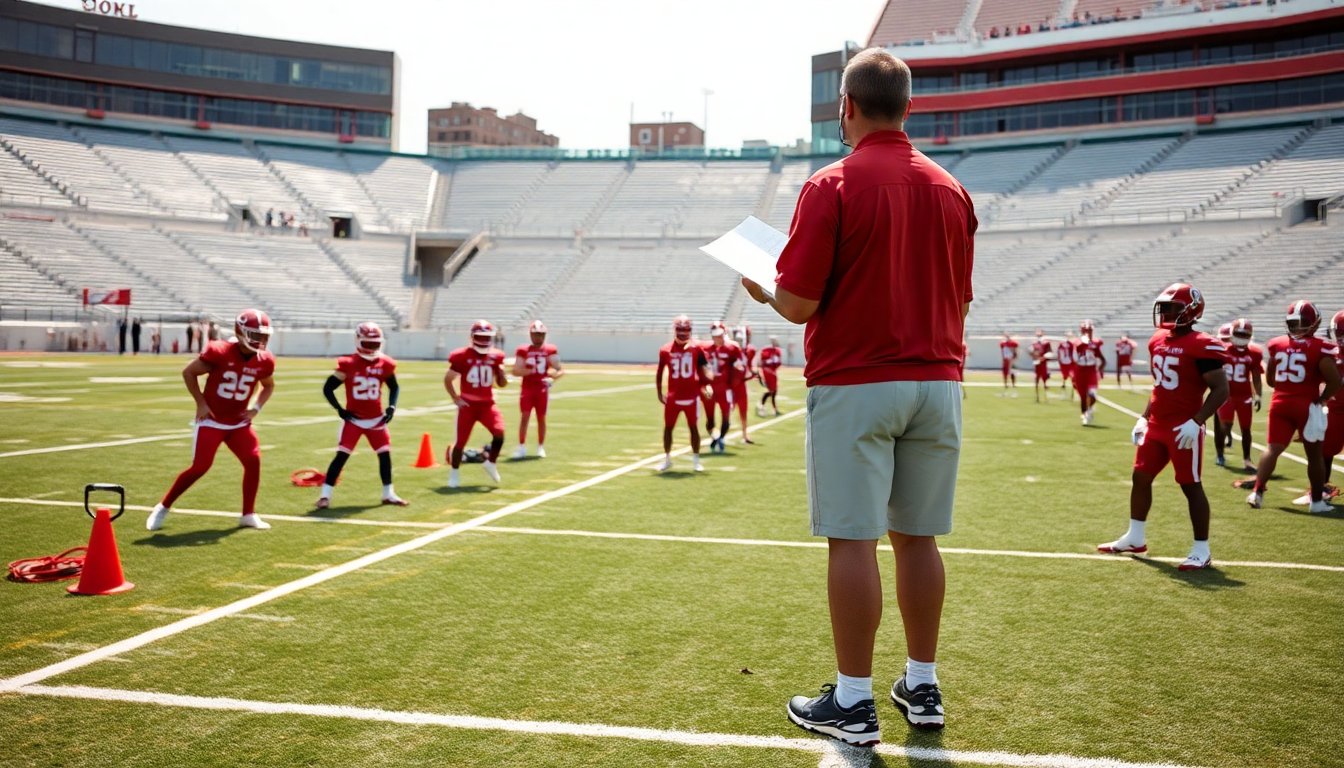Table of Contents
The landscape of college football is evolving, and few programs are adapting as dynamically as the Oklahoma Sooners. As they transition into the Southeastern Conference (SEC), the Sooners aim not only to maintain their competitive edge but to revolutionize their operational structure. This transformation reflects their ambition to become the SEC’s equivalent of an NFL franchise, encompassing a comprehensive reimagining of their organizational framework.
Central to this shift is the introduction of a General Manager role, which will operate alongside the head coach. This decision marks a significant pivot in college football management, aligning closely with professional sports models. The Sooners’ administration seeks to build a front office that mirrors the successful strategies of the Philadelphia Eagles, known for their innovative approach in the NFL. Such a structure promises to enhance recruitment, player development, and overall team performance.
Leadership and strategic direction
At the core of this ambitious overhaul is the search for a new athletic director, led by a former CEO of AT&T. This choice signals a commitment to corporate-style leadership, aiming to infuse the program with a blend of business acumen and sports expertise. By engaging someone with extensive experience in managing large organizations, the Sooners hope to attract top talent and foster a winning culture.
Building a robust front office
The configuration of the new front office will be pivotal in achieving these goals. By emulating the Philadelphia Eagles, the Sooners intend to create a collaborative environment where the General Manager and head coach work closely to formulate strategies that resonate both on and off the field. This collaboration is expected to accelerate decision-making processes, ensuring that the team remains agile and responsive in a highly competitive landscape.
Moreover, having a dedicated General Manager allows for more focused player evaluation and recruitment strategies. This specialized role ensures that the Sooners can identify and secure top-tier talent suited for the rigors of SEC play. The emphasis on a professional approach also enhances the overall player experience, promoting a culture that prioritizes development and success.
Adapting to the SEC environment
Transitioning to the SEC is no small feat; it demands a rethinking of how teams prepare and compete. The Sooners recognize that the level of competition in the SEC is unprecedented, requiring them to adapt their methodologies to thrive. This adaptation is reflected in their recruiting strategies, which now focus on attracting athletes capable of excelling in a more demanding environment.
Recruitment strategy overhaul
The Sooners are not just looking for athletes; they are seeking players who embody resilience and adaptability. The recruitment process has been refined to identify individuals with exceptional skills and a mindset geared towards overcoming challenges. This shift is crucial, as the SEC is renowned for its physicality and competitive spirit.
With this revised approach, the Sooners aim to build a roster that can withstand the challenges posed by their new conference. By aligning their recruitment with the demands of the SEC, they are laying the groundwork for long-term success. This strategic foresight is essential in positioning the program as a formidable opponent within the SEC, an environment that can often feel like a battlefield.
The road ahead
The Oklahoma Sooners are taking bold steps towards establishing themselves as a dominant force in the SEC. By implementing a front office structure akin to that of an NFL franchise and embracing a new leadership style, they are not just preparing for the challenges ahead but actively redefining what it means to be a college football program in today’s competitive landscape. The journey will undoubtedly be demanding, but with a clear vision and an innovative strategy, the Sooners are poised to make their mark in the SEC.


